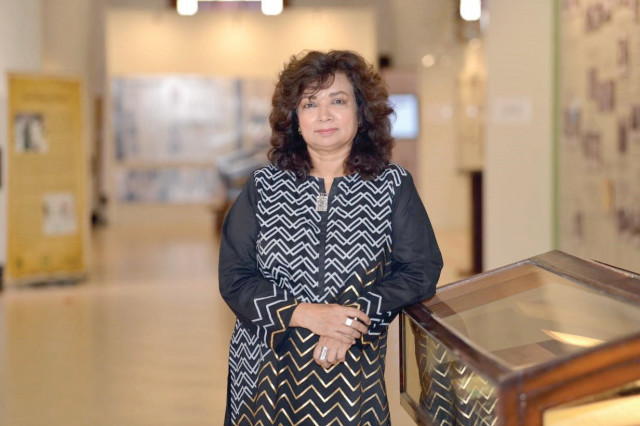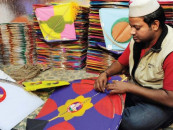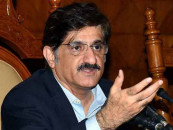In Pakistan, an archaeologist jumps over hoops to pursue her passions
Dr Asma Ibrahim encountered gender discrimination every step of the way but remained steadfast

In Pakistan, an archaeologist jumps over hoops to pursue her passions
The hype around the mummy took a sharp twist and the curator faced hurdles by the authorities as she tried to prove her claim true. Asma sought assistance from the British Broadcasting Corporation (BBC) and made waves on international media as investigation revealed that the corpse was actually of a young woman who had been killed - as recently as the 1990s.
The department of archaeology was not too happy about this development. Asma’s refusal to succumb to the pressure to declare the fake as a true relic only ruffled more feathers in a department where she already stood out for being a woman. Driven by her love for archaeology, however, Asma stood her ground and despite the many formal and informal barriers she completed her post-doctorate in the subject and has been serving as the Director of the State Bank Museum and Art Gallery department since 2006.
Driven by curiosity
At the age of 13, Asma lost her father. Soon after, she, her mother and five siblings were dispossessed from their house and illegally evicted. Asma entered the workforce as a young door-to-door electricity metre reader in order to finance her studies. Till college, she stuck to the sciences, attempting to fulfil her late father’s wishes and become a doctor. But it did little to satisfy her curiosity for the historical processes that led to the evolution of human civilisations. When applying for her masters, Asma found that local varsities lacked programmes dedicated to archaeology and related fields. She enrolled in the department of history at the University of Karachi and sought courses as close to archaeological study as she could find. She graduated with a gold medal and went on to pursue her PhD in Numismatics at the varsity.
Formal and informal barriers
During her masters Asma was struck by the disparity in opportunities available to female and male students. The former were sent as far as the Pakistan National Museum while the latter were sent to Harappa when it came to field excursions. She encountered similar barriers as she entered the job market. She was turned away from the national department of archaeology as the then director-general (DG) told her that the department had no space for women. While on the hunt for a job that allowed her to dig deeper into archaeological study, Asma worked for a private publication company and compiled text books for students of grades four and five.
Eventually, a new DG was appointed for the national archaeology department and Asma found a temporary position at the department. When her six-month position ended, the department refused to allow her to continue. However, she remained associated with the department on voluntary basis and worked for another year without pay. Asma was finally hired by the department in 1999 in its exploration and excavation branch.
Academic crisis: On the back burner for 10 years
When a French mission arrived in Pakistan and Asma sought the director-general’s permission to go for excavations. Like several times prior, she was told that women do not go to such places. The department finally conceded to letting her go after Asma furnished a ‘permission’ letter from her mother. The excursion proved to be fruitful. A fort of the Sansanian Empire was found under water near the Indus delta. The success came at a personal cost for Asma as she soon became the subject of callous rumours raising questions on her character. The basis of these rumours was the fact that Asma had gone out to the field with men.
Asma stuck her ground, however, and made her mark in the field. She dealt with personal and professional hurdles in stride and remained steadfast in her academic and professional pursuits. When her husband-to-be objected to her working in the field and asked her to restrict her study to her desk, Asma chose to opt out of the engagement.
Feats and accomplishments
In the years preceding her PhD, Asma undertook various courses, diplomas, and workshops to build her professional expertise. She completed courses in the French and German languages, studied American history, and attended a workshop on Indo-Greek studies, among other certifications.
She was urged to attend a workshop in Lahore by archaeologist Dr Ahmed Hasan Dani where participants were studying coins of the Indo-Greek era. This was during the time she was looking for scholarships for further studies. Her PhD thesis entailed an extensive study of the methods of governance employed during Greek rule in the subcontinent and the prevalent social and political beliefs of the time. Her thesis focused particularly on Sindh and Balochistan and was based on the coins from that time period.
In 2005 she went on a post-doctorate fellowship through the Fulbright Programme in Ancient Human Remains from the University of Wisconsin, United States of America.
During her tenure at the national archaeology department, she discovered a fort in Tharo Hills at the National Highway, which was built by the army of Alexander the Great. The fort was built in 39 days.
When she was appointed at the exploration and excavation branch, her office space was more of a dust ridden and mismanaged store where artefacts were stored. Asma transformed the branch entirely by compiling records and carrying out tagging and cleaning work.
Her efforts paid off and in 2006 she was hired by the State Bank Museum.
Asma remains buried deep in archaeological study and has worked on several conservation projects. She is currently working on a project with the Harvard School of Medicine and serves as a board member of the Common Wealth Association. Asma is proud of her choices and remains as fascinated by the subject(s) of her study as she was when she started out. However, she points out, it is no surprise that the gender balance in her field remains skewed. Another deterrent, she says, is the lack of separate programmes devoted to such subjects in local varsities.
This story is part of a weekly series that seeks to bring to light the unsung heroes of Karachi - the hawkers, traders, doctors, teachers, engineers, lawyers and daily-wage labourers. It is they who make Karachi the city of lights.
Published in The Express Tribune, January 6th, 2020.



















COMMENTS
Comments are moderated and generally will be posted if they are on-topic and not abusive.
For more information, please see our Comments FAQ